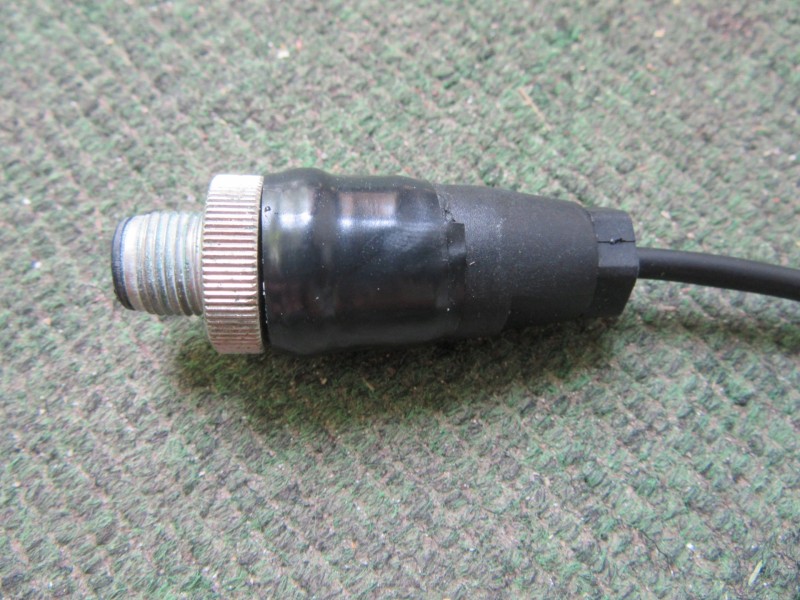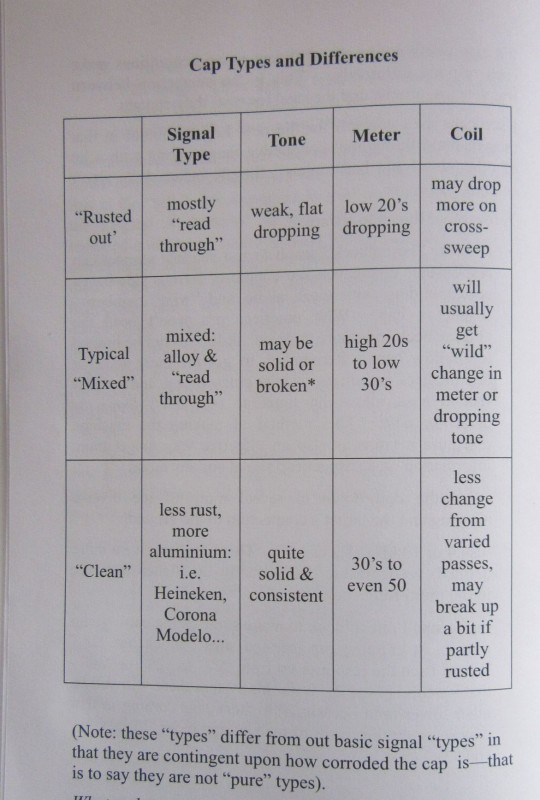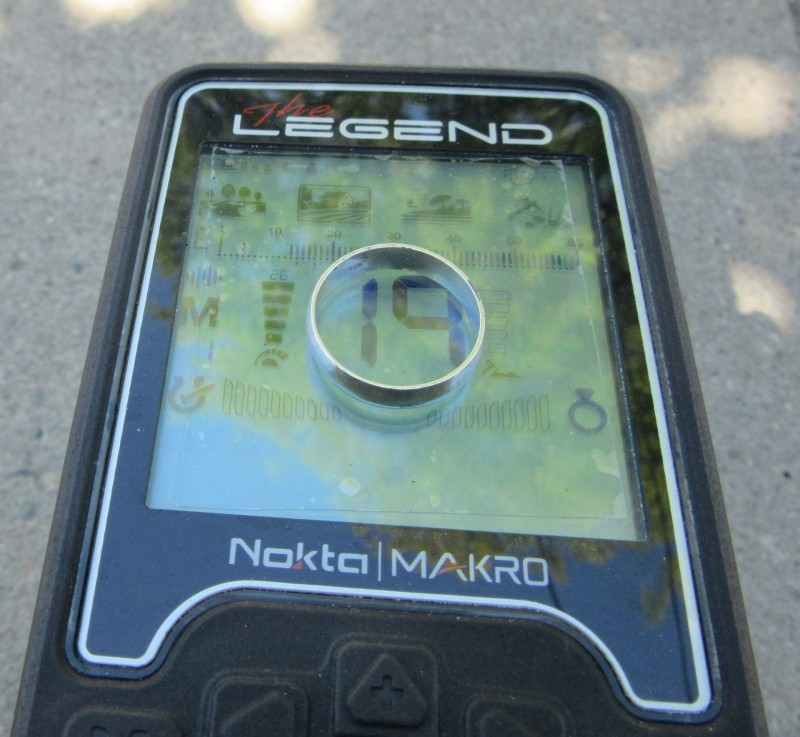-
Posts
516 -
Joined
-
Last visited
Content Type
Forums
Detector Prospector Home
Detector Database
Downloads
Posts posted by cjc
-
-
I would also say that with all of its threaded aluminum surfaces (and slightly dodgey coil connector) a tube of Permatech Dielectric Grease is a must. Apply with a toothbrush to all co-axe jacks and pins--hopefully this will prevent any "wasabe' from showing up. and the jacks turning properly.
cjc
-
The AQ can be tricky to tune in fast salt but overall it has a lot of fidelity for varied condtions. Good that you are not afraid to run "3" Sens----still deep at that setting.
cjc
-
On 8/28/2022 at 10:39 PM, midalake said:
This was just posted by Tom D.
Gary...... We've been working on the Manticore for nearly 3 years. A TON has gone into this one. And with different 'mindset'. I will share more data.....as time permits...... AND = when it will NOT infringe upon sales of other stuff.,.,.,.,., and/or C.O.I
Something I want to clarify.... that Mark Lawrie stated in the YouTube video: The ID system is on a scale of 99 points. So is the scale of iron ID range! -99 to 0. (Negative 99 to 0). (((Salt ID's as '0'))). This is to say: Nearly a 200-point ID span.
There were 2 VERY primary 'focus-of-intent' into this project.
There's a few more loose-ends to button up.VERY Interesting>>> 99 points of Ferrous range, and 99 points of Nonferrous range.....
XLT style ...😁...always liked it.
cjc
-
I took my numbers from the manual. They do seem to make for dramatic differences in turning perameters--I suggest testing a target in Tone to set up the machine.
cjc
-
I would also add that if you want to use tone as a checker--tune it first. To just pop over will probably be a lot weaker. It's effectiveness is also keyed to the target depth so when something is weak in A/M it may not respond / check accurately in tone. cjc
-
9 hours ago, Tony said:
Clive…….and for that you will need a longer pulse width
Thats what Eric said.
cjc
-
It was pointed out to me by my buddy Jim that the AQ runs three different pulse FQ ranges--one for each mode. These go from highest in A/M (4.02-4.17) to lowest in volcanic. (1.54-1.56). Tone mode is in the middle at 3.04-3.12. I've come to recognise that each has its seperate turnng characteristics. Unlike most detectors--the A/M is easier to tune than the Tone mode. With Tone, you have the "back end" ground noise that warbles in and out. If you are overtuned, this will overwhelm your target sounds. The Tone mode needs to be run closer to preset Gain, with a lower Threshold and Volume. It also needs a slower sweep speed for deep targets to stand out. With Tone and Mute, targets sound wider and flatter--especially when you run low delay. As with any pulse, the low conductor sensitivithy of the low delay settings makes small targets sound bigger. A setting of 10 uSc or higher makes signals more defined. So while there are differences between the depth of the A/M and tone modes--the way to reduce this difference is with proper tuning. As you increase the Gain in Tone mode, the signal flattens out--and target sounds are weaker. For higher Gain settings, Mute has a lot of potential in that it has no "back end" ground noises. At the same time it can also be overtuned. A good way to become familiar with the responses of the AQ (or any detector) is to start witih the "extreeme" settings and learn to recognize how overtuning sounds in the threshold and target tones. Oddly enough, athough the REJ control is suppposed to only be active in tone mode, turning it right down increases the depth.
Still testing this machine--it certainly has a lot of potential.
cjc
-
On 8/11/2022 at 11:22 AM, Joe Beechnut OBN said:
Out of the 12 or so owners I know of the AQ Limited, only 4 are really happy with it. (Mike, Carolina, TVR and me) I've come to the conclusion it takes a special breed to understand what the machine can do, how to use it and most important.. where to use it... Mike and I use it as a PI, Carolina and TVR use both sides of it, Disc/PI.
No doubt the AQ is not the perfect machine but I would not sell or trade the (2) I have for anything out there. I love them!
Would I recommend a AQ Limited to anyone.. right now, no. Take a chance and let them sell thru the 40 or so they have left and see if they offer the new one with the upgraded battery setup. A 3 hour and 20 plus minute battery is Sad. A extra is 200.oo! Ouch! Also, if you plan on using it in moving salt water it may not be the machine for you, on the open beach (wet/dry sand) its at home.
Hope I am right on my answer, I would hate to see this great machine die with only the limited model being made.
Joe! Have you forgotten me? I bought a second one just because Im used to protos and the bugs that are part of owning them. Eric made me a proto CS6 pi that I've had to fiddle with over the years--the AQ is no more problematic than that. My wish for this machine would be more reliable pots (the Vishays can be dodgey) and a better big 22k response. Even after a few service go rounds I'm very happy with the tech of this machine and dissagree that there's anything wrong with the iron ID. The target info is actually excelllent with some basic skills added. For an experienced PI user --it doesn't get any better. Fisher service is also excellent.
cjc
-
21 hours ago, Carolina said:
Hi Clive. Could that be a 8 pin CTX waterproof phone jack?
Hi Carolina--Well ya, but it can also be configured for Nokta Makro. It's solderless, (jumpers notwithstanding) and good for fumbly people who could not solder an M8 at gunpoint. 😁
Regards clive
-
-
-
So that's your secret--a touch of the master's hand...
That's a high rate--interesting must be super stable and good on the 22k.
cjc
-
I like the circuit too it's smooth and has great target info. I now have two units but as I had warned and warned again the Vishay pots are a real weakness and I've had one defective Sens and three T/H's go bad. These pots were the bain of some of Eric's machines and needed almost annual changing out. That said though, the AQ does have great optimization (22k notwithstanding) and enough fidelity to make it versatile enough for a wide range of conditons. FT has been good on the service though and Felix has given great customer service to keep me in the game. For fast salt I don't see anything amongst the VLF offerings that even come close. Hate to say it but all high performance pulse machines for the water have flaws. Having owned maybe 8 seeping, pot and coil dropping Dual Fields, 2 GQA2's, a proto CS6pi, 3 Cudas and a homemade W/P TDI Pro--you get used to it.
cjc
-
-
The surface tests definitely make it look like an in-iron killer. Each machine that N/M produces seems to have more unmasking ability than the last and the Legend looks like it will be the best of all. Very excited to try this update! The interaction between the IB, VCO and Audio Boost (Gain) should be interesting too.
cjc
-
I've run a Racer, Impact Kruzer and Anfibio and with each of these I was impressed by the in iron processing and overall audio. Now with the Legend you are adding the "lock on" ability that multi frequency gives you. This is a big deal and some of my tests in areas with a lot of iron have been surprising. The machine pulls up good targets while pushing the iron and other low rejects out. Where you have a lot of caps, the ones that have any extension in the tone are those with lot of aluminum--the Heineken Corona etc. This shows how exact the machine is in making the ferrous / non-ferrous determination. It will be interesting to see what an Bias control will do for this accuracy.
cjc
-
On 6/8/2022 at 9:03 AM, CanadianScouser said:
The most common pull tabs In this neck of the woods , Ontario,Canada seem to hone in on the 29 value on my Legend . .Consequently I tend not to dig them too often .Just wondering if I may be missing something good on occasion.Any thoughts on this ?
I notice that 28 and 29 are both cap and small oval tab numbers--a kind of "one stop shopping" reject number. At the same time I would watch your target size and depth. The general idea of gathering a bit more target information than just the number and tone can alert you to some good targets that would have mimicked trash. Some of the best gold finds I've seen around here have mimicked pennies and it was only the depth that was unusual.
cjc
-
Some Silver with the Legend There are guys up here who specialize in hunting in the woods. They find a ton of silver by doing detailed research and knowing what to look for in the forest. I spotted some old trees beside a river and decided to give it a try. The Legend is just a superb detector for this kind of hunting because of how much audio information it gives you. It’s also very smooth in the junk–even in All Metal. I ran in “Field” mode, Low Weighting (M1) and 6 Tones audio. Where you have a lot of too big targets (wire, big foils, tins…) its important to listen to the signal tone. I was able to hear those responses that were too big–even in discriminate. Checking these in Pinpoint mode told me which ones were too wide and flat to be of interest. When using a machine with segmented audio (6 Tones for example) it’s important to be able to tell which high responses are coin sized and which are too big. Other targets were transitioning from high to mid tones–not what I was after. A few larger food package type foils told me that I was in an old picnic area. I got a clean high tone that read up in the low “50”s”. It was narrow in Pinpoint and checked on the cross sweep–bingo–silver ring. Now this might not be such a great find in open park ground but the Legend let me zero in in this high potential target in the middle of the woods, in an area full of big foils, cans, beer and screwcaps. This is a very well made and well thought out detector. Can’t wait to see what the next upgrade will do. cjc
-
4 hours ago, Dmnz said:
Hi Guys
can anyone provide a real world, non-sponsored view on the XP deus 2 and bone phones - mainly for the beach and more importantly for the water/dive. I have a long experience with the excals, ATX, CTX and various other detectors - tried the original XP a long while ago and moved on quickly. Minelab have been so slow on a 'CTX replacement' - so the D2 11" needs some investigation.
For those with the XP D2 machine - are you still happy - or wished you waited for the new minelab CTX 4040! (one can dream??)
Thoughts appreciated before spending the $
OBN??
Dale
this is about where Im sitting--is there more to this machine for us salt hunters than the Beach Sensitive mode? Can the Dive mode be made to perform? Fast digital and salt waves don't mix unless someone can tell me otherwise. If someone tells me that this is not true I'll have one so fast...
cjc
-
With the correct length of lanyard and it's positioning the guard is not really needed. This is a nice machine given a bit of awareness. Still running the Sea Hunter? Just wondering how you find it...
cjc
-
my AQ set up. Float to keep the back end up if you have to let go of it. the foam also acts to keep the lanyard positioned. the lanyard keeps the unit under control and clear of any of the jacks / cables. I also have a plastic power jack guard made from a shampoo bottle. I also wrap the power jack and coil connector with rubberized tape to be on the safe side.cjc
-
On 5/25/2022 at 10:26 AM, Steve Herschbach said:
No idea on that, but I have no doubt it was Bruce’s brilliance in audio processing that paved the way for Minelabs success. At the end of day it’s all about filtering out what we don’t want to hear, leaving only what we want to hear.
Thanks for your reply, Steve. Its an interesting question just how much must be going on for a machine to pass the "iron cross test" for example--seeing gold right though a pair of crossed spikes. The sense I get is that now there's less need to dig half responses, as a couple of sweeps will process the good signal right up though any surrounding iron. the Legend certainly does this--it pulls up targets amazingly well. People say that the CTX is "slow" but the thoroughness that it processes with is amazing.
cjc
-
Just one thing I've noticed in getting down to some detailed testing of this machine. It was pointed out to me that each mode runs different kHz ranges. I've noticed that each tunes differently so the idea of flicking one to the other is not a good one in that each needs different Sensitivity, Volume and Threshold to perform at it's best.
cjc
-
I had read in Bruce Candy's autobiography that some of the amplifier circuits he developed before coming to Halcro measured interference in the millionths of a part. Does anyone know if these super fast new detectors are approaching that level of efficiency? I'm trying to figure out how they do what they do...
...probably a dumb question...not my first...nor last...😆
cjc






Would You Buy An AQ Limited If You Could?
in First Texas - Bounty Hunter, Fisher & Teknetics
Posted
I put the lanyard at the top --it goes over the shoulder and I drag...
cjc